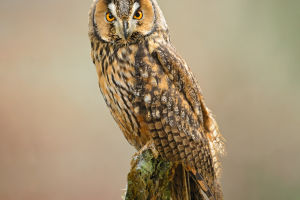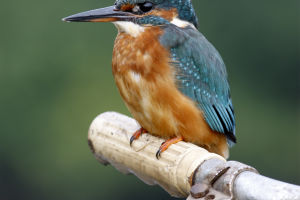Woodpeckers, belonging to the avian order Piciformes, are remarkable birds celebrated for their unique anatomy and behaviors that enable them to thrive in diverse ecosystems around the world.
The woodpecker has a strong and sharp beak that can be used to cut through tree bark; its tongue goes around the back of the skull and reaches the tip of the beak from the nostrils.
This specialized structure allows the tongue to extend very long and be retractable, with short hooks at the tip, suitable for hooking and feeding on wood borers; the tail feathers are wedge-shaped and have thick rachis to support the body when pecking wood.
Their food habits are very widely distributed: including carnivorous, omnivorous, and herbivorous species, and their diet also covers arboreal insects, grass-dwelling insects, ground-dwelling insects, or berries, nuts and even sap-sucking species. Woodpecker species vary greatly in body size, ranging from more than ten centimeters to more than forty centimeters.
Woodpeckers are found almost all over the world except Australia and New Guinea, but they live mainly in South America and Southeast Asia. Most woodpeckers settle in one area.
In spring, male woodpeckers make loud calls to expand their territory and warn others away. These calls are extra loud because they resonate in tree holes. Woodpeckers appear particularly quiet during other seasons. However, when the male woodpecker is courting, he will use his hard beak to beat rhythmically on the hollow tree trunk, making a crisp "tap" sound.
Woodpeckers peck on trees approximately 500 to 600 times a day, each peck reaching speeds of up to 555cm/s. Despite this, their heads endure significant shocks, shaking even faster at 580cm/s. Remarkably, they neither suffer concussions nor experience headaches. Woodpeckers possess at least three layers of anti-shock mechanisms in their heads.
Its skull structure is loose and full of air. There is also a tough outer meninge inside the skull. A narrow gap between the outer meninges and the brain marrow contains fluid that reduces shock impact. The fluid transmission of the shock wave plays the role of shock absorption.
Because sudden rotational movements are more likely to cause brain damage than straight, horizontal movements, there are developed and powerful muscles on both sides of the head, which can prevent and absorb shocks. This exquisite anti-shock setting principle provides a useful reference for anti-shock engineering in providing safe sports protective caps and anti-shock helmets.
Modern protective caps have a hard shell with a soft cover inside, leaving a certain gap between them. A protective collar is added to the cap to prevent rotational movement in the event of a sudden collision.
Just as woodpeckers play a unique role in nature, humans can learn from them and strive to respect and protect biodiversity, foster harmony with the environment, and create a better future together.


